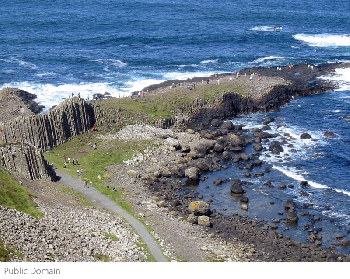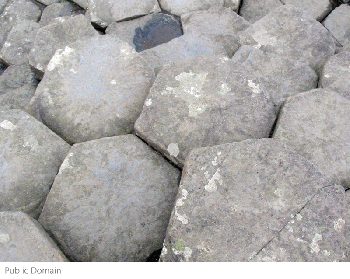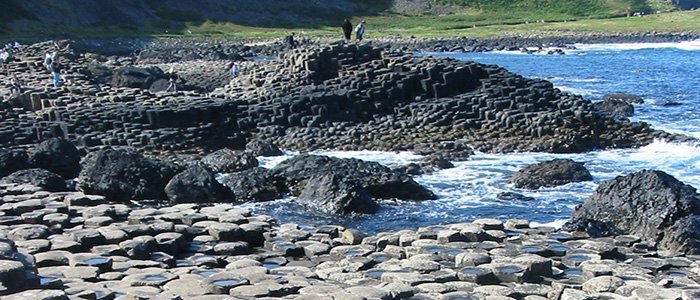Giant´s Causeway (Northern Ireland)
Geology
With its unusual honeycomb columns, Giant´s Causeway attracts thousands of visitors each year to Northern Ireland.
Overview
Bushmills, County Antrim, Ireland
With its unusual honeycomb columns, Giant´s Causeway attracts thousands of visitors each year to Northern Ireland. Geologists agree about how these natural structures were formed—periods of volcanic activity were interspersed with periods of cooling, with water covering the cooling lavas. The interesting question is when this cycle took place and how long it lasted.
Evolutionary geologists, attempting to date the rocks using radiometric dating, have obtained dates over 60 million years. However, radiometric dating methods can be horribly flawed if they are based on bad assumptions: (1) scientists must guess at the composition of the rock when it first formed; (2) evolutionary scientists assume that the radioactive elements inside the rocks have always been decaying at the same rate; and (3) evolutionary scientists must guess at how much contamination has occurred.
Scientists who accept the biblical record reject the faulty assumptions that lead to dates over millions of years. They accept the Bible´s revelation that the Flood occurred only about 4,500 years ago. Knowing this, they believe that the violent currents of the Flood, deposited the sedimentary strata now found in Northern Ireland. Then late in the Flood, soon after the waters began receding, volcanic activity covered the sedimentary strata with a thin layer of lava. This lava then hardened as it cooled. As the earth movement paused, the waters briefly covered the area again. Within days, the earth movements and lava flows restarted. This rapid cycle would explain the stacked sequence of lavas—with their cooling columns—that we see today.
Points of Interest
Irish Folklore
According to one favorite legend, Giant's Causeway was formed by Finn MacCool, an Irish giant. Finn MacCool had been enraged by the ranting of the Scottish giant named Finn Gall, living across the Channel. So Finn MacCool tore large pieces of rock from the cliff and made a land bridge across the Channel.
Too exhausted to fight, he built a large crib, disguised himself like a child and fell asleep. Seeing the completed causeway, Finn Gall crossed the Channel to fight. But when he found the massive "child," he reasoned that his father, Finn MacCool, must be massive. So he fled back to Scotland, breaking up the causeway as he went.

Cracks in Cooling Lava
The Causeway Basalts are made up of seven separate lava flows, most of them measuring about 100 feet (30 m) thick. These layers were produced as a result of the earth's plates shifting. These movements created openings in the crust, through which lavas rushed out. Each layer of lava was cooled and hardened before being covered by another layer of lava.
The 40,000 or more, mostly six-sided columns of Giant's Causeway give evidence to a cooling between layers. As the lava began to cool from both the top and bottom, it cracked. The cracks extended vertically until they connected, forming columns.

Evidence of Water’s Role
Many evidences around the Causeway testify to how water also shaped this area: (1) broken rock is found on top and bottom of the lava, where water rapidly finished cooling the lava; (2) the water’s cooling of the lava produced a yellowish-brown material; (3) the steam that bubbled up through the cooling lava produced long, vertical tubes; and (4) waters that returned and filled the cracks in the lava produced twisted columns, called entablatures.

Helpful Tips
- To book a tour, visit http://www.giantscausewayofficialguide.com/local.html#book.
- For directions to the visitor center, check out http://www.giantscausewayofficialguide.com/local.html#getting/
Recommended Resources

Answers in Genesis is an apologetics ministry, dedicated to helping Christians defend their faith and proclaim the good news of Jesus Christ.
- Customer Service 800.778.3390
- © 2024 Answers in Genesis




